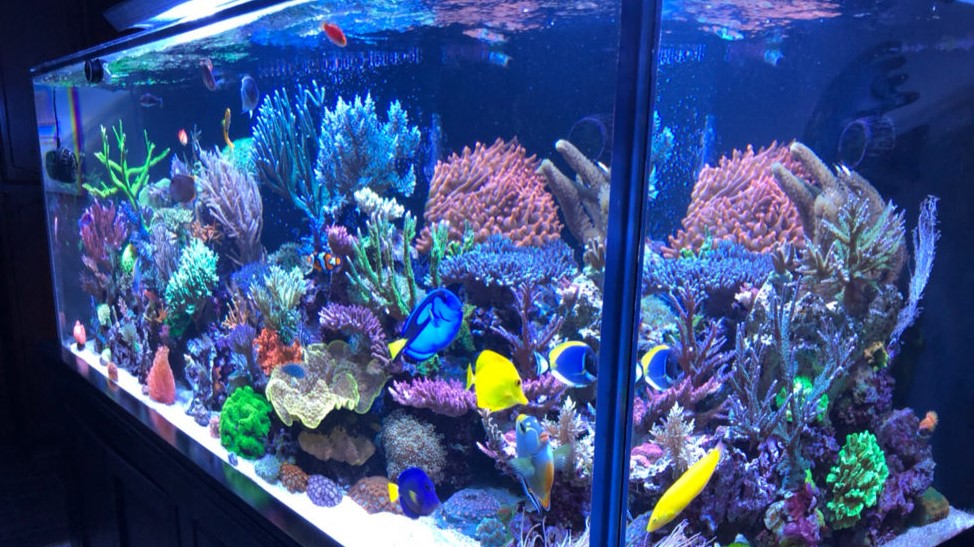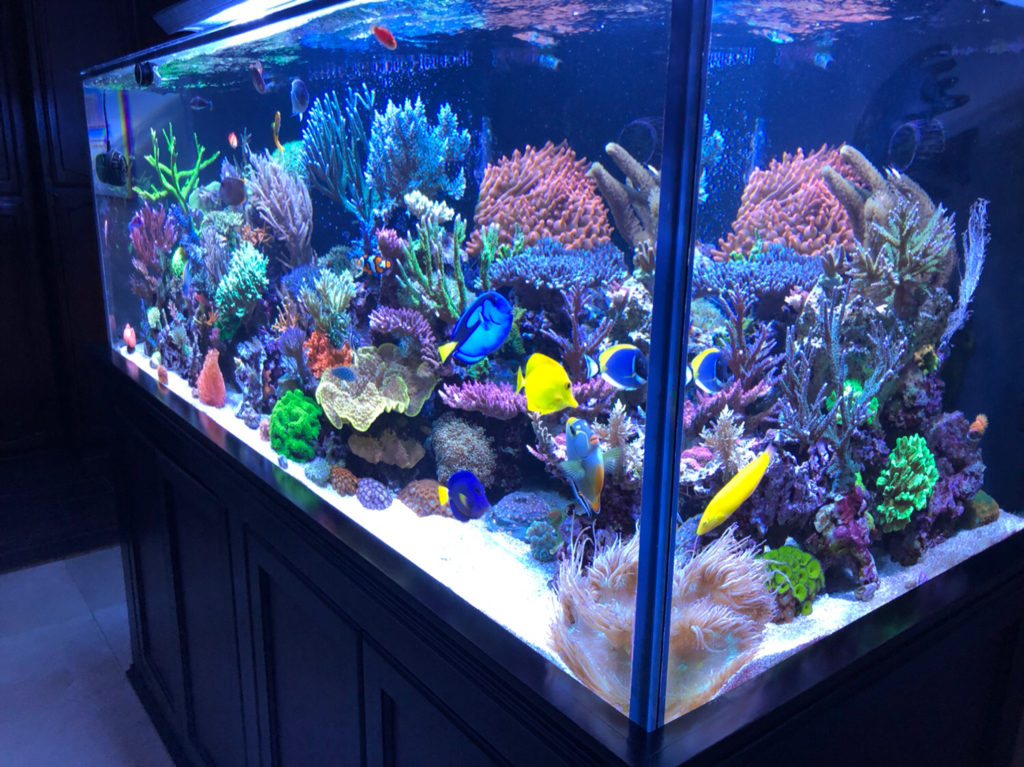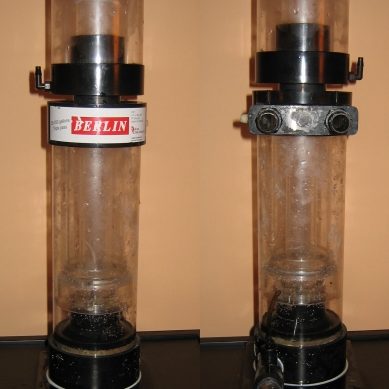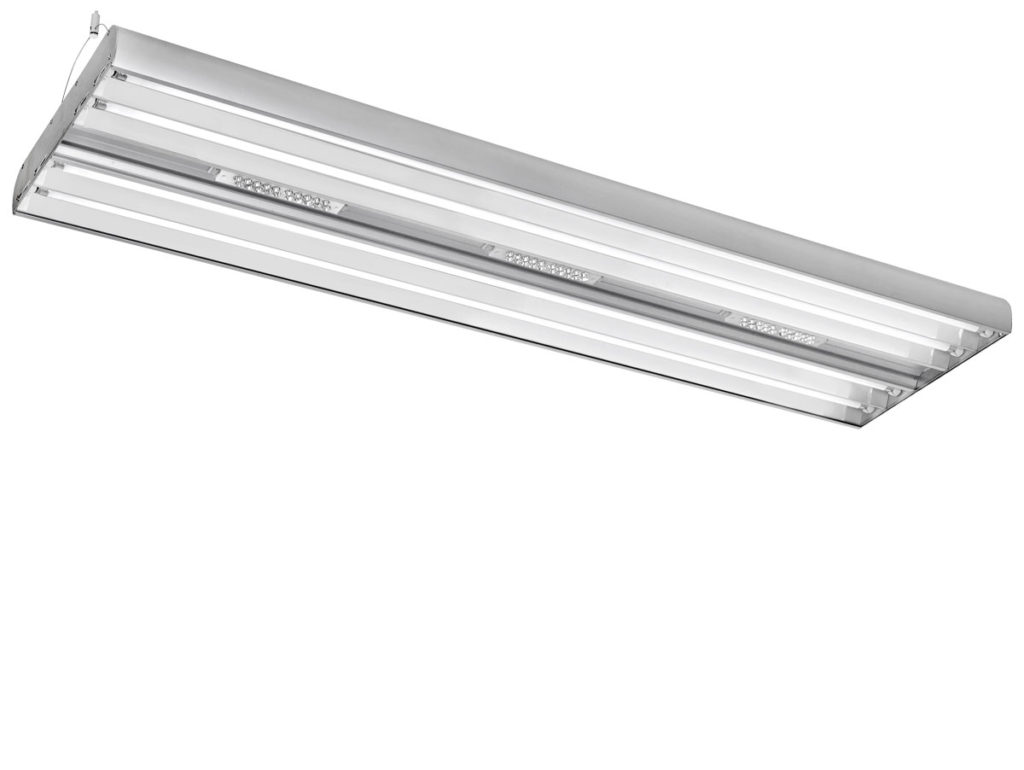
Part 1: Expectations

Advances in knowledge and technology over the past couple decades have made it possible to keep beautiful, healthy corals in a relatively small closed ecosystem in our dwelling.
Introduction
Having your own reef aquarium is a rewarding experience. It’s really the opposite end of the spectrum from the gold fish bowls and plastic cup with bettas that you won at your local fair. It’s the holy grail of being an aquarist. I have been in the reef aquarium hobby for about 20 years, and there is no doubt in my mind that having a healthy, thriving reef aquarium is an accomplishment. It could be anything from a cool addition to a bedroom or office to an eye-catching centerpiece of an extravagant living room. Reef keeping is a hobby that incorporates biology, chemistry, engineering, art, and, if you want to save some money, DIY. You simply can’t buy the latest and greatest equipment and be automatically successful. But as the saying goes, nothing worthwhile is easy to attain.
To be successful in this hobby, it will take research, knowledge, experience, and diligence. If I had to choose one quality that is absolutely essential to having a successful reef aquarium, it would be patience. In the little glass or acrylic box in our homes or offices, we are trying to simulate the conditions of corals reefs—one of the most delicate, poorly understood, and diverse ecosystems in the world. It takes time for these closed systems to mature and it will take some diligence to maintain. But don’t jump ship just yet, I honestly believe you can make it as simple or complicated as you want it to be. In a very general sense, a system that integrates more equipment, or automation, will require less maintenance compared to a set-up with less. Contrast the two systems below.
Example: Susan Nichols’ 10g mixed LPS and soft coral tank. This beautiful, but simple set-up consists of easy to keep corals such as soft corals and LPS (long polyp stony corals). All of the equipment for this system is in plain view.

Example: Ron’s stunning 250g mixed tank with soft corals, LPS, and SPS. In addition to soft corals and LPS, Ron’s reef aquarium contains a large amount of SPS (small polyp stony corals), which are more difficult to keep. Much of Ron’s equipment are under the tank stand and some are in a separate room. You can learn more about Ron’s system here.
Thoughts on choosing the right equipment
Like the computer industry, technology has expanded this hobby greatly. I would argue, however, just like our smart phones and social media, all the latest and greatest gadgets aren’t really necessary—although retailers and companies will try to convince you otherwise. If you look at one of the older, original online reef forums, Reef Central, you will see what I mean. When you look at Reef Central’s affiliated digital magazine, Reefkeeping Magazine, you will see absolutely stunning tanks from the late 2000s, which in my opinion was the peak of this hobby. LEDs were infants on the scene in the very late 2000s, most of which were DIY LED projects. Now LEDs dominate the market and have features that rate high in the super-cool-gadget category but are largely unnecessary. Don’t get me wrong, LEDs are energy efficient and cheaper in the long run compared to traditional lighting such as metal halide (MH) and T5 fluorescent (T5) and have become the standard for soft coral and LPS (long polyp stony coral) tanks due to their energy efficiency and the ability to sometimes tease out different colors in corals. In general, you are better off choosing an LED fixture for your first tank for all these reasons. In this case, technology has given us more choices when it comes to aquarium lighting, however all the bells and whistles that sometimes come with this new tech is unnecessary.
There is one invention, however, that changed this hobby forever, and that’s protein skimmers. The advent of skimmers in the 1990s is when success in this hobby really exploded. There are so many shapes and sizes of skimmers nowadays but there hasn’t been a breakthrough discovery for skimmers in probably over a decade. My point in all this is not to diss the new products, but to alert you to the fact that, if you are new to this hobby and doing research, you will be flooded with the latest and greatest tech out there that will have a lot of support from folks who have had success in with it. Just don’t think a $800 LED fixture that comes with an app that allows you to change the color spectrum is completely necessary for success. Just keep in mind that, although tech has exploded in the last several years, there really isn’t better looking aquariums today as a result of this technology, compared to several years ago. Here is a link for Reefkeeping Magazine’s Tank of the Months archive from “back in the days”. Pay attention to the dates. I cannot honestly say that overall our reef tanks look better or are healthier nowadays compared to back then. Technology in this hobby has given us more options, and while some new tech is appropriate for some tanks, you will find that many aquarists, such as myself, still use older-style equipment to get great results. This also reveals another important concept in this hobby: there are many ways of being successful.

Berlin skimmer made by Red Sea. The author used this exact same skimmer on his first reef tank in 1999. Skimmers have drastically improved since the introduction of this particular product, but no significant improvement in technology has been seen in the last several years. Image taken from 3reef.com.
There is one thing to be said about technology in general that most would agree on: it can make your life a lot easier, and this hobby is no exception. Theoretically, although impractical, you can keep a successful reef tank with an adequate light, some rocks for biological filtration, some sort of temperature control, such as a heater, a pump for circulation, some saltwater and the tank itself. The problem with that is you would have to do frequent, and I mean super frequent, water changes to maintain low levels of waste products and replace any essential elements that are used up by the aquarium inhabitants. This is where technology comes in. You can have a filter, biological or mechanical or chemical, that helps to keeps the waste products in check. So spending money on a filter in this case is more practical than performing water changes every day, which can be disruptive and may even hurt or stress the inhabitants. It becomes a question of how much time do you want to spend maintaining your tank versus enjoying it. Like all things in life, you pay for convenience. You can reduce, or in some cases eliminate, maintenance by having certain pieces of equipment. For example, a protein skimmer will reduce the frequency needed to perform water changes compared to a system without one. Remember we are trying to simulate a delicate, complicated ecosystem in a relatively miniscule box in our home. It is not a set-it-and-forget-it hobby. It’s set it, maintain it, and enjoy it. Your reef tank is like any other pet—except so much more cool and unique. It can bring you great joy and relaxation, but you have to keep it healthy. You can save a lot of time on maintenance by having good, reliable pieces of equipment.
Where to seek advice?
There is a ton of information out there but use caution. Unfortunately a lot of information out there is biased to say the least. It’s biased from the people who have had success from certain equipment, but who have not tried anything else. It’s biased by the companies and retailers who are trying to make a profit. You will find that some vlogs and blogs are tainted by sponsors. Message boards, although very helpful for the most part, can propagate myths and are an ocean of anecdotal experiences sometimes so well-expressed that they often come across as fact. The thing that I and others have realized on these forums is that many members can speak eloquently about certain subjects, but when you see their tank (or they never show their tank), it’s a disappointment. My own observation about message boards is that the people with beautiful tanks are the ones who rarely post. Sure, they may have a build thread that they update once in a while, but for the most part they are absent from the everyday posting frenzy and the need for social validation of the forums. But don’t get me wrong, message boards on the whole are indispensable and have played a huge role in my success in this hobby, especially with regard to problem-solving. Again, just be careful with who you take general advice from. Make sure they are experienced and their credentials consist only of a beautiful reef aquarium that you would want in your own home. Number of posts and ‘likes’ means nothing. Don’t be afraid to direct message those experienced aquarists that you come across who have breathtaking tanks. You will find that, although they don’t post much publicly, many are happy to share advice and experiences, and answer any questions you may have if asked judiciously.
In Summary
Research, diligence and patience is key for replicating a piece of one of the most breathtaking ecosystems in the world. Getting advice from experienced reefers who have a tank similar to what you hope to achieve will help tremendously in this regard and will likely save you money in the long run. Don’t get caught in paralysis-from-analysis! At some point you will have to dive right in! You’re probably not to going to get it right the first time, although this should be the goal. Remember, the strongest corals grow in the roughest waters! Check back for the second part of this blog series, which will help you select a tank! Until then, welcome to the hobby and happy reefing!

